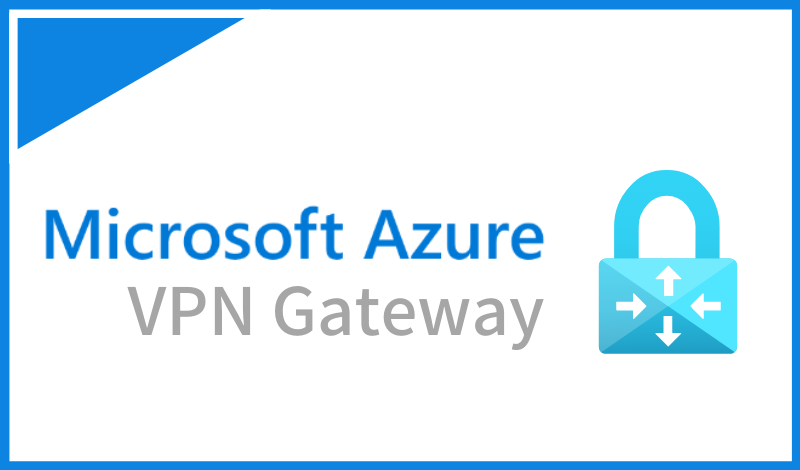Navigating the Cloudscape: Unveiling the Wonders of Azure VPN Gateway
 Sumit Mondal
Sumit Mondal
Introduction
In the ever-evolving landscape of cloud computing, businesses and individuals alike are constantly seeking secure and efficient ways to connect to their virtual resources. Enter Azure VPN Gateway – a beacon of connectivity in the vast sea of cloud services offered by Microsoft Azure. In this blog post, we'll embark on a journey to explore the intricacies of Azure VPN Gateway, unravel its features, and guide you through a hands-on example to showcase its prowess.
Azure VPN Gateway Unveiled
Azure VPN Gateway is a vital component of Microsoft Azure's networking services, empowering users to establish secure and reliable connections between on-premises networks, remote offices, and the Azure cloud. Acting as a bridge between your on-premises infrastructure and Azure, this gateway facilitates seamless communication, ensuring data flows securely and efficiently.
Key Features
Site-to-Site Connectivity: Azure VPN Gateway enables site-to-site connectivity, allowing organizations to establish a secure connection between their on-premises network and the Azure virtual network. This ensures that resources on both ends can communicate securely, fostering a seamless extension of your on-premises data center into the Azure cloud.
Point-to-Site Connectivity: For remote workers or smaller offices, point-to-site connectivity is a game-changer. Azure VPN Gateway allows individual devices to connect to the Azure virtual network over a secure tunnel, ensuring that remote users can access resources in the cloud as if they were on-premises.
Multi-Site Connectivity: The flexibility of Azure VPN Gateway extends to multi-site connectivity, enabling organizations to connect multiple on-premises sites to a single Azure virtual network. This is particularly beneficial for businesses with a distributed infrastructure or those undergoing expansion.
Highly Available and Scalable: Azure VPN Gateway is designed for high availability and scalability. It ensures that your connectivity remains robust, even in the face of potential failures. With the ability to scale based on your organization's needs, this gateway grows with you as your business expands its cloud footprint.
Hands-On Example: Connecting On-Premises Network to Azure
Now, let's dive into a hands-on example to illustrate the ease with which Azure VPN Gateway can be set up.
Scenario: Imagine you have an on-premises network and wish to extend it to Azure, allowing seamless communication between your local infrastructure and Azure resources.
Steps:
Azure Portal Access: Log in to the Azure portal, and navigate to the Azure VPN Gateway service.
Create a Virtual Network: Create a virtual network in Azure that will serve as the hub for your connected resources. Define the address space and subnets to match your on-premises network.
Create VPN Gateway: Within the Azure VPN Gateway service, create a new VPN Gateway. Configure the gateway with the necessary settings, such as SKU, VPN type, and the virtual network you created.
Configure Connection: Create a connection between the Azure VPN Gateway and your on-premises network. Specify the on-premises address space, configure authentication settings, and define the connection type (site-to-site or point-to-site).
Download Configuration: After the connection is established, download the VPN client configuration. This will include details such as the shared key, VPN server address, and authentication settings.
On-Premises Configuration: On your on-premises VPN device or server, configure the VPN connection using the downloaded settings. Ensure that the on-premises device can reach the Azure VPN Gateway over the internet.
Verification: Verify the connection status in the Azure portal. If everything is configured correctly, the connection should be established, and you can start communicating between your on-premises network and Azure resources.
Conclusion
Azure VPN Gateway stands tall as a beacon of connectivity, bridging the gap between on-premises networks and the Azure cloud. Its robust features, coupled with the seamless integration into the Azure ecosystem, make it a go-to solution for businesses venturing into the realm of cloud computing. By following our hands-on example, you've witnessed firsthand how Azure VPN Gateway transforms connectivity into a simple and secure experience, empowering organizations to navigate the cloudscape with confidence.
Subscribe to my newsletter
Read articles from Sumit Mondal directly inside your inbox. Subscribe to the newsletter, and don't miss out.
Written by

Sumit Mondal
Sumit Mondal
Hello Hashnode Community! I'm Sumit Mondal, your friendly neighborhood DevOps Engineer on a mission to elevate the world of software development and operations! Join me on Hashnode, and let's code, deploy, and innovate our way to success! Together, we'll shape the future of DevOps one commit at a time. #DevOps #Automation #ContinuousDelivery #HashnodeHero